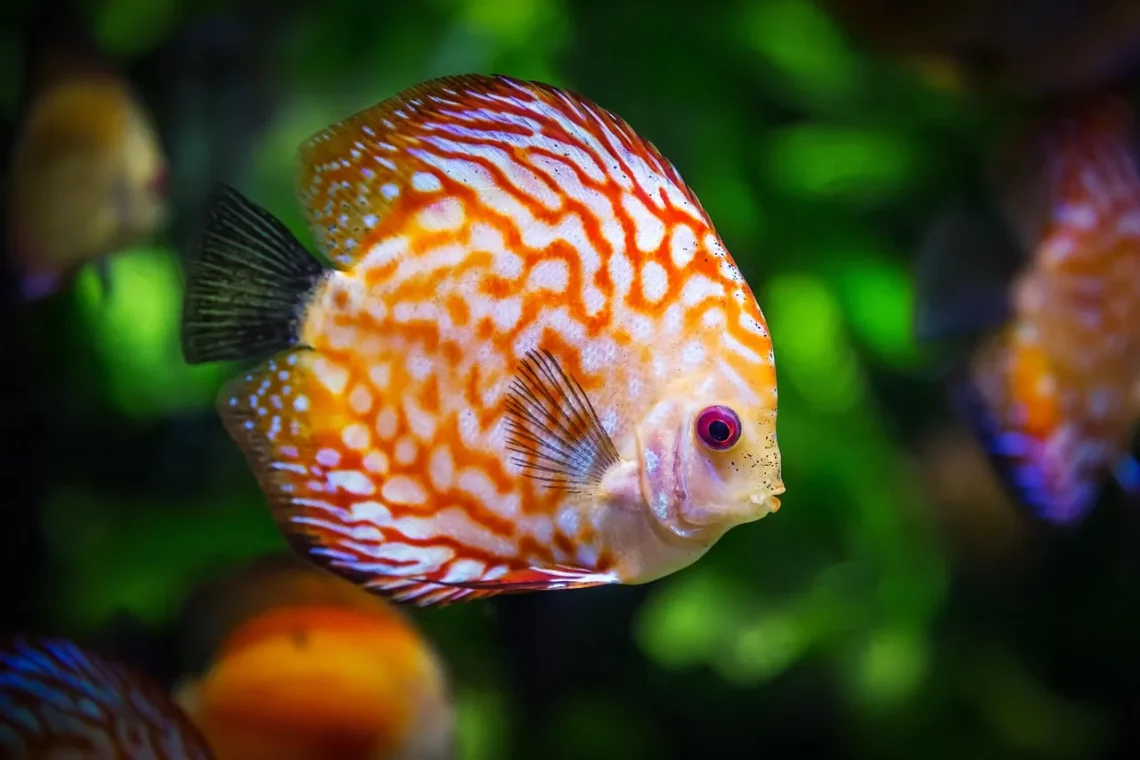
Understanding Cloudy Eye Fish: Causes, Care, and Solutions
Cloudy eye fish, often characterized by a cloudy or opaque appearance in their eyes, can be a source of concern for both novice and experienced aquarists. This condition can arise from various factors, including environmental stressors, underlying health issues, or even genetic predispositions. Understanding the complexities behind cloudy eyes in fish is essential for maintaining a healthy aquarium ecosystem. When fish exhibit this symptom, it can serve as a warning sign that something may be amiss in their environment or health.
The eyes of fish play a crucial role in their overall well-being, impacting their ability to navigate their surroundings, find food, and evade potential threats. Thus, when these vital organs become cloudy, it can affect not only the fish’s quality of life but also the harmony of the entire tank community. This article aims to delve deeper into the causes of cloudy eye conditions in fish, explore effective care strategies, and discuss potential solutions to restore the health of affected fish. With the right knowledge and proactive measures, aquarists can ensure their aquatic pets thrive in a vibrant, healthy environment.
Common Causes of Cloudy Eyes in Fish
Cloudy eyes in fish can be attributed to a variety of factors, each requiring specific attention and care. One of the most common causes is poor water quality. Fish are highly sensitive to changes in their aquatic environment, and even minor fluctuations in parameters such as pH, ammonia, nitrite, and nitrate levels can lead to health issues, including cloudy eyes. When water quality deteriorates, it can cause stress and irritate the fish’s eyes, leading to inflammation and cloudiness.
Infections, both bacterial and parasitic, are another leading cause of cloudy eyes. Fish can be susceptible to various pathogens that thrive in an unhealthy tank environment. Bacterial infections, such as those caused by Aeromonas or Pseudomonas species, can result in cloudy eyes as a symptom of systemic illness. Similarly, parasitic infections, such as those caused by flukes, can also manifest in ocular symptoms, including cloudiness.
Nutritional deficiencies may also contribute to cloudy eyes in fish. A balanced diet is essential for maintaining optimal health, and a lack of essential vitamins and minerals can lead to various health issues. For example, vitamin A deficiency has been linked to ocular problems in fish. Ensuring a varied and nutritious diet can help prevent such deficiencies and promote overall health.
In some cases, genetics can play a role in the development of cloudy eyes. Certain fish breeds may be predisposed to ocular issues due to inherited traits. Understanding the specific needs and health concerns of different species can help aquarists identify potential problems early.
Lastly, trauma or injury can cause cloudiness in a fish’s eyes. Physical damage from tank decorations, aggressive tankmates, or even collisions with the tank walls can lead to inflammation and clouding. Paying attention to the tank’s layout and ensuring that it is safe for all inhabitants can help mitigate this risk.
Effective Care and Management Strategies
When faced with cloudy eyes in fish, proper care and management are crucial for recovery. The first step is to assess and improve water quality. Conduct regular water tests to monitor parameters such as pH, ammonia, nitrite, and nitrate levels. If any levels are found to be outside the acceptable range, take immediate action to rectify the issue. This may involve performing partial water changes, using filtration systems, or even employing water conditioners to stabilize the environment.
In addition to maintaining water quality, it’s essential to observe the affected fish closely. Look for other symptoms that could indicate a more serious underlying condition, such as lethargy, loss of appetite, or changes in behavior. These signs can help determine whether the cloudy eyes are a symptom of a larger health issue.
If infections are suspected, it may be necessary to isolate the affected fish to prevent the spread of disease to other tankmates. In this situation, you can treat the fish with appropriate medications. Antibacterial medications can be effective against bacterial infections, while antiparasitic treatments can help combat parasitic infestations. Always follow the manufacturer’s instructions and consult with a veterinarian if you’re unsure about the appropriate treatment.
Providing a balanced diet is another critical aspect of care. Quality fish food that contains essential vitamins and nutrients can help bolster the immune system and promote healing. Consider incorporating high-quality pellets, flakes, and frozen or live foods into their diet to ensure a well-rounded nutritional intake.
Moreover, consider the tank’s environment. Ensure that the fish have plenty of hiding spots and places to retreat. Stress can exacerbate health issues, so creating a calm and secure environment is vital. Regular tank maintenance, including cleaning and monitoring for aggression among tankmates, can also contribute to a healthier atmosphere.
Home Remedies and Solutions
While professional treatment may be necessary in severe cases, several home remedies and solutions can aid in the management of cloudy eye conditions in fish. One effective approach is to incorporate aquarium salt into the tank. Salt can help reduce stress and promote healing by creating a more balanced osmoregulation environment for the fish. It is essential to use aquarium salt, as table salt can contain additives that are harmful to fish.
Another home remedy includes adding specific herbal treatments to the tank. Some aquarists have found success with natural remedies such as garlic, which can enhance the immune response and fend off infections. Garlic can be added to the fish’s food or the water in small, controlled amounts. Always ensure that any herbal treatments are safe for the specific species in your aquarium.
Ensuring a stable and appropriate temperature can also play a significant role in the recovery process. Fish are ectothermic, meaning their body temperature is regulated by the surrounding environment. Keeping the tank at a consistent, optimal temperature can help support the fish’s immune system and overall health.
In addition to these remedies, consider using UV sterilizers in your aquarium. UV sterilizers can help eliminate harmful bacteria, parasites, and algae in the water, creating a healthier environment for your fish. This can significantly reduce the risk of infections that may lead to cloudy eyes.
Finally, patience is key when dealing with cloudy eyes in fish. Recovery times can vary based on the cause and severity of the condition. Regular monitoring and maintaining good aquarium practices will foster an environment conducive to healing and overall well-being.
**Disclaimer**: This article is for informational purposes only and should not be considered medical advice. Always consult a veterinarian or a qualified fish health professional for any health-related concerns regarding your fish.




